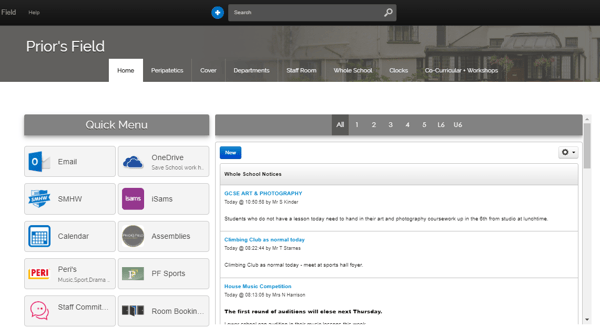Technology implementation rarely works in isolation, the successful ones are those where collaboration, training and regular usage are all in evidence. So how does this work in practice? Paul Garner, ICT Head of Department at Priors Field Academy shares three steps to achieving a whole school adoption of Frog, based on their individual experience and learning.
1. Forget about the technology at the outset
It’s tempting to look at Frog as the starting point and work backwards engineering a solution for your school, but my advice is to put it to one side at the start. Focus instead on your school practices and procedures and identify opportunities to become more efficient.
Intangibles are the new measure of a digital products’ worth, only by examining the value it has for individuals and organisations can return on investment be fully realised. All stakeholders should be engaged to understand where workload burden and budget inefficiencies are of concern.
Creating a digitally positive culture will help your school to adapt more easily to the pace of change. The next generations are using technology in their everyday lives and will expect it to be embedded in their education.
Apparently 80% of our screen time is spent on just three main applications and I recommend setting a Key Performance Indicator (KPI) for Frog to become one of the three in your school as a measure of true adoption.
It will take time to steer a large group of people toward a common goal and understanding, I believe two years is a realistic timescale to implement a whole school adoption of Frog.
2. Be strategic
We implemented an information gathering process, auditing activities throughout the school and putting an objective against those we wanted to improve. For example, for school cover notices there was an objective to reduce the number of emails and incorporate sharing in real-time, a date would be associated in the implementation timeline so that everyone had a clear view of when it would be addressed. This process also ensures individuals recognise the positive impact it will have on their own workload.
Tip! To get Frog into the top three applications that teachers and students use daily, involving them in the process will help them to see the value of Frog before implementation. Ensure EVERYONE can be part of the revolution, don’t leave ANYONE out.
3. Get launch-ready
Build – Getting ready to launch 6 weeks prior to the planned launch date will allow time to step back, look at everything objectively and collect feedback from selected people.
Test – If someone finds a broken link or permissions issue this can affect the adoption process. The more that gets picked up in the testing phase the better the implementation and user experience will be.
Launch – I recommend setting the launch on a whole staff inset agenda. This ensures everyone knows what’s coming and when. Providing a quick tour of Frog gives time for questions.
Tip! Keep the session brief, explain the what/why and how. It is important that everyone goes away excited by what’s to come. Scheduled sessions could be set for later in the day to enable individuals to login and try it out.

We applied the cutover method, which means the old system is cut and overwritten by a new system. This allows the new system to be made immediately available when it becomes operational.
Summary
You can’t communicate enough! The more people felt involved, the more they engaged with the technology.
Be clear about what you need the technology to do for you before it arrives. It is much easier to measure the impact when you know how onerous or expensive tasks and activities were before implementation.
Never stop learning! Frog hosts several free events across the country where you can learn of new features, be inspired by the way other schools are using Frog and get one-to-one time in with product experts. There’s also a wide range of support materials available online in the Frog Community.



